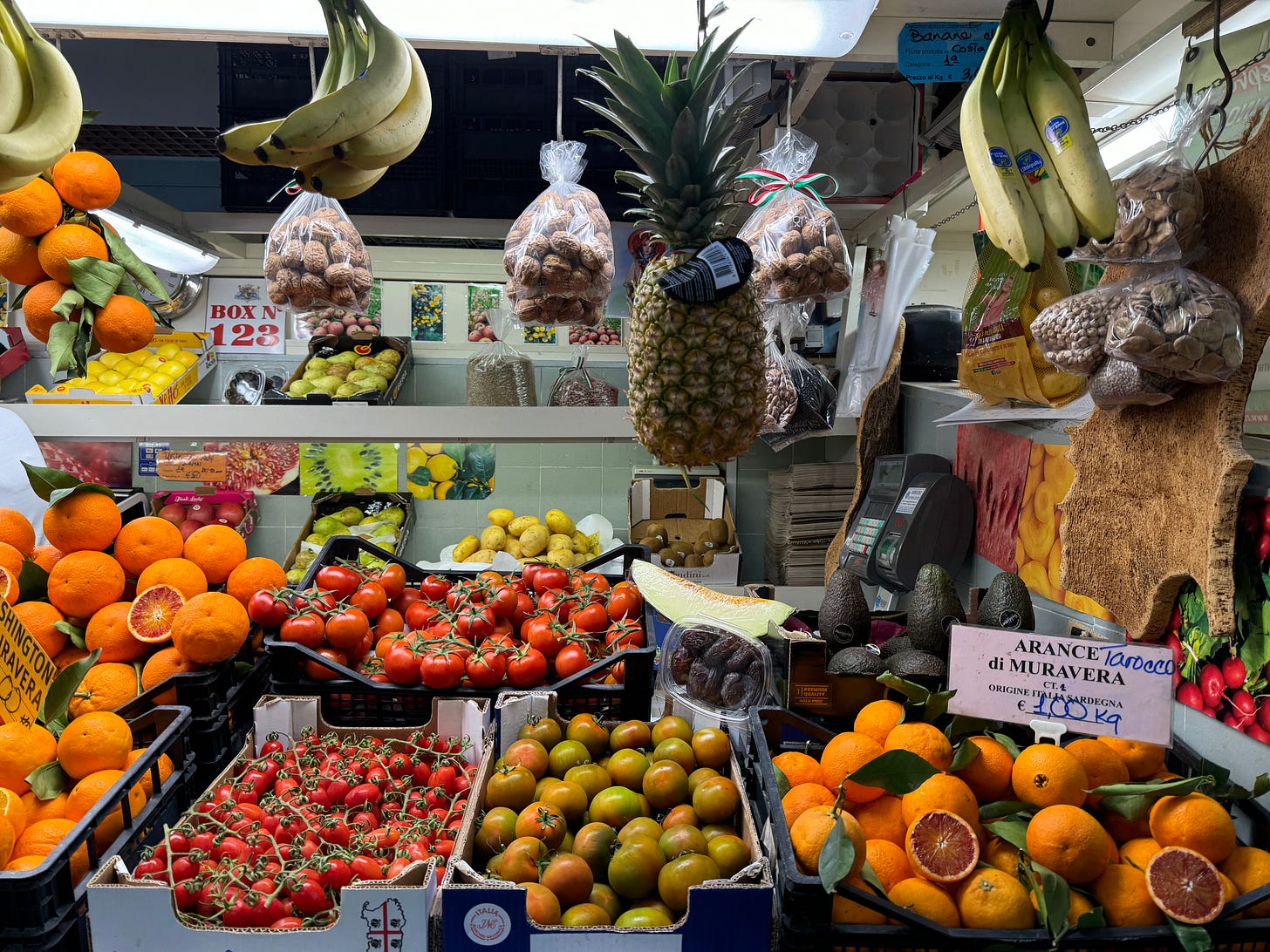Ciao, everyone. My time in Cagliari is wrapping up. It has been busy! Besides taking an Italian immersion course and doing my usual work, my Sardinian friend Stefano has been taking me around to do local things like zooming around the city on a moto (yes, I wore a helmet and hung on for dear life), sailing in the bay, and hanging out with friends for an aperitivo. One of the things that makes Sardinia an ideal place to study Italian is that very few people speak English. Last weekend, I got lots of practice speaking at the mercato while shopping for our Founding Members cooking class.
I loved zooming across the world to cook with you all! Our next Founding Members cooking class will take place at the end of June. (To join, upgrade your subscription to the Founding Member tier.)
I’ll share more about Sardinian life soon, but today we are continuing our discussion of the Green MED diet. Last time I wrote to you about how this plant-forward spin on the Mediterranean diet helped preserve brain volume over time in clinical trials. The secret ingredient to the Green MED diet was, of course, polyphenol-rich foods. That being said, this was not just a nutrition trial. Researchers also got their participants to exercise more and eat less meat. For a recap of the takeaways from the Green MED diet study, scroll to the bottom of this post.
The good news is that while the Green MED diet includes very specific foods to boost polyphenol intake, in reality you can access equivalent brain health nutrition by swapping in other polyphenol-rich foods that you like. All it takes is a little science-based knowhow. Below, I outline a strategy for applying the Green Med in real life, no Mankei required. But first, let’s get into what, exactly, polyphenols are and what they can do for your health.





